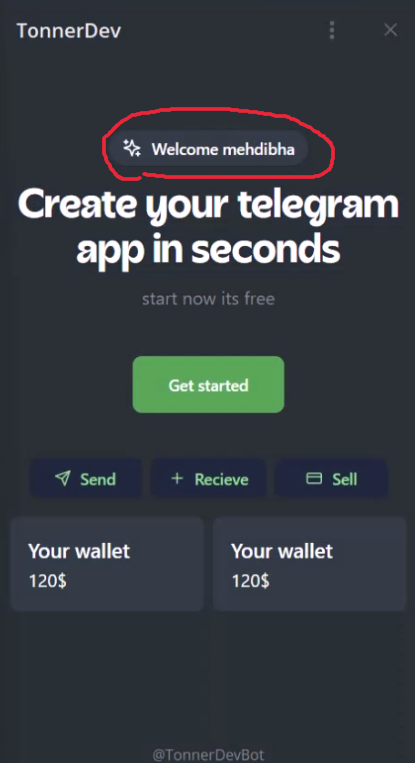Activities of "hitaspdotnet"
Hi, seems we have a PR related to this issue, Enable Login with this tenant for templates contains microservice-template label. please guide me using that PR if possible.
NO, I shared my code as you asked, and already added this.
Do I need to config AuthServer:Authority in authServer too? After clicking on Login I see redirect to auth.domain.com which is host's issuer and then redirected to host home page.
the url after click on login:
https://auth.tonner.io/connect/authorize?client_id=Web&redirect_uri=https%3A%2F%2Fapp.tonner.io%2Fsignin-oidc&response_type=code%20id_token&scope=<scopes>&response_mode=form_post&nonce=<nonce>&access_token=<token>&tenantid=bec78466-c1c3-d8dc-beb3-3a112a214a25&tenantusername=admin&returnurl=https%3A%2F%2Fapp.tonner.io%2FSaas%2FHost%2FTenants&state=<state>&x-client-SKU=ID_NET8_0&x-client-ver=7.0.3.0
is it possible to impersonate tenant on the host domain? If yes, please guide me!
Hi,
How do you configure the subdomain tenant resolver?
Could you share your steps?
in web, web.public & authserver I added:
Configure<AbpTenantResolveOptions>(options =>
{
options.AddDomainTenantResolver(configuration["TenantDomain"]);
});
also this config in their appSettings:
"TenantDomain": "https://{0}.app.domain.com"
...
"TenantDomain": "https://{0}.pub.domain.com"
...
"TenantDomain": "https://{0}.auth.domain.com"
in authserver module:
PreConfigure<AbpOpenIddictWildcardDomainOptions>(options =>
{
options.EnableWildcardDomainSupport = true;
options.WildcardDomainsFormat.Add(configuration["WildCardDomains:AuthServer"]);
options.WildcardDomainsFormat.Add(configuration["WildCardDomains:Web"]);
options.WildcardDomainsFormat.Add(configuration["WildCardDomains:PublicWeb"]);
});
and authserver's appSettings:
"WildCardDomains": {
"AuthServer": "https://{0}.auth.domain.com",
"Web": "https://{0}.app.domain.com",
"PublicWeb": "https://{0}.pub.domain.com"
}
then in web & web.public :
if (Convert.ToBoolean(configuration["AuthServer:IsOnK8s"]))
{
context.Services.Configure<OpenIdConnectOptions>(
"oidc", options =>
{
options.MetadataAddress = configuration["AuthServer:MetaAddress"]!.EnsureEndsWith('/') +
".well-known/openid-configuration";
var previousOnRedirectToIdentityProvider = options.Events.OnRedirectToIdentityProvider;
options.Events.OnRedirectToIdentityProvider = async ctx =>
{
ctx.ProtocolMessage.IssuerAddress = configuration["AuthServer:Authority"]!.EnsureEndsWith('/') + "connect/authorize";
var currentTenant = ctx.HttpContext.RequestServices.GetRequiredService<ICurrentTenant>();
var tenantDomain = configuration["TenantDomain"];
if (currentTenant.IsAvailable && !string.IsNullOrEmpty(tenantDomain))
{
ctx.ProtocolMessage.IssuerAddress =
ctx.ProtocolMessage.IssuerAddress.Replace("{0}", $"{currentTenant.Name}");
}
else
{
ctx.ProtocolMessage.IssuerAddress =
ctx.ProtocolMessage.IssuerAddress.Replace("{0}.", string.Empty);
}
if (previousOnRedirectToIdentityProvider != null)
{
await previousOnRedirectToIdentityProvider(ctx);
}
};
var previousOnRedirectToIdentityProviderForSignOut =
options.Events.OnRedirectToIdentityProviderForSignOut;
options.Events.OnRedirectToIdentityProviderForSignOut = async ctx =>
{
// Intercept the redirection for signout so the browser navigates to the right URL in your host
ctx.ProtocolMessage.IssuerAddress = configuration["AuthServer:Authority"]!.EnsureEndsWith('/') +
"connect/logout";
var currentTenant = ctx.HttpContext.RequestServices.GetRequiredService<ICurrentTenant>();
var tenantDomain = configuration["TenantDomain"];
if (currentTenant.IsAvailable &&
!string.IsNullOrEmpty(tenantDomain))
{
ctx.ProtocolMessage.IssuerAddress =
ctx.ProtocolMessage.IssuerAddress.Replace("{0}", $"{currentTenant.Name}");
}
else
{
ctx.ProtocolMessage.IssuerAddress =
ctx.ProtocolMessage.IssuerAddress.Replace("{0}.", string.Empty);
}
if (previousOnRedirectToIdentityProviderForSignOut != null)
{
await previousOnRedirectToIdentityProviderForSignOut(ctx);
}
};
}
);
}
and the userMenu in web & web.public
var authServerUrl = _configuration["AuthServer:Authority"] ?? "~";
var returnUrl = _configuration["App:SelfUrl"] ?? "";
var currentTenant = context.ServiceProvider.GetRequiredService<ICurrentTenant>();
var tenantDomain = _configuration["TenantDomain"];
if (currentTenant.IsAvailable && !string.IsNullOrEmpty(tenantDomain))
{
authServerUrl = authServerUrl.Replace("{0}", $"{currentTenant.Name}");
returnUrl = tenantDomain.Replace("{0}", $"{currentTenant.Name}");
}
else
{
authServerUrl = authServerUrl.Replace("{0}.", string.Empty);
}
I kept gateways and services as before except openIddict data seeder.
hi
is it best practice to add whole process inside custom grant type?
I tend to do this.
then the token and refresh token are accessible at /connect/token?
Yes, Because your
access_tokenis legal.You can add some simple logic checks in your custom grant type. and then integrate Telegram.
Thank you very much sir. You gave me a very clear idea. I decided to implement user creator in a separate service. First, I will search for the identityUser via loginInfo by the provider infos, if it is not found, I will reject the request in custom grant type. Then I check the response in the client side, if the request is rejected, I'll send a request with telegram user's info to the semi-fake user creator service.
Thank you @maliming. You are awesome. is it best practice to add whole process inside custom grant type?
I have a host-side entity to store keys for hash decryption: key = $"{ICurrrentTenant.Name}:{TelegramBotApiToken}". tenant name is same as bot username.
here are steps I need to do to grant a request:
- Get telegram data from request parameters
- Inject keyRepository and get current tenant's key
- validate hash from step 1
- get user's userName from telegram data
- check if already existed else create it and assign default roles.
- create principals
- set scops, claims and resources
- handle principal and log security
- return sign in result
then the token and refresh token are accessible at /connect/token?
So far, the framework's identity module has met all the infrastructure I needed, and I never had to customize it. I have no idea where to start. I'm not asking you for code, I just want to know where I should go to customize ABP authentication for this or any similar scenarios. I appreciate your guidance.
Best regards.
hi
You can check this: https://github.com/abpframework/abp/issues/4977#issuecomment-670006297
Add your
TelegramExternalLoginProvider
let me try to be clearer. this is a telegram web application. as you see, telegram user already detected. I used same algorithm but client side (nextjs - react). I need to authorize these users and their permissions in backend.
 telegram web app has force dependency to telegram bot, so we have to create a bot if we want to launch a telegram web app. so, I decided to mark bots as our tenants and app's users as tenant users. I created a custom tenant resolver to get bot ID from request. Also, I created a custom grant_type and I added it to bot client's scops to accept requests from the bot. I need an endpoint to post data:
telegram web app has force dependency to telegram bot, so we have to create a bot if we want to launch a telegram web app. so, I decided to mark bots as our tenants and app's users as tenant users. I created a custom tenant resolver to get bot ID from request. Also, I created a custom grant_type and I added it to bot client's scops to accept requests from the bot. I need an endpoint to post data: auth_data, id, hash and get token to store it in the client storage and making queries to the API using this token based on their permissions. if received data is valid but requester user is not existed in ABP user db then should create it with default role and not be rejected, then generate and send token.
I also have a criticism; I have been a fan of ABP team since ZERO and have always followed your work because of my interest in your team. But the support forum is more like GitHub issue and only the bugs of the framework itself are well supported.
